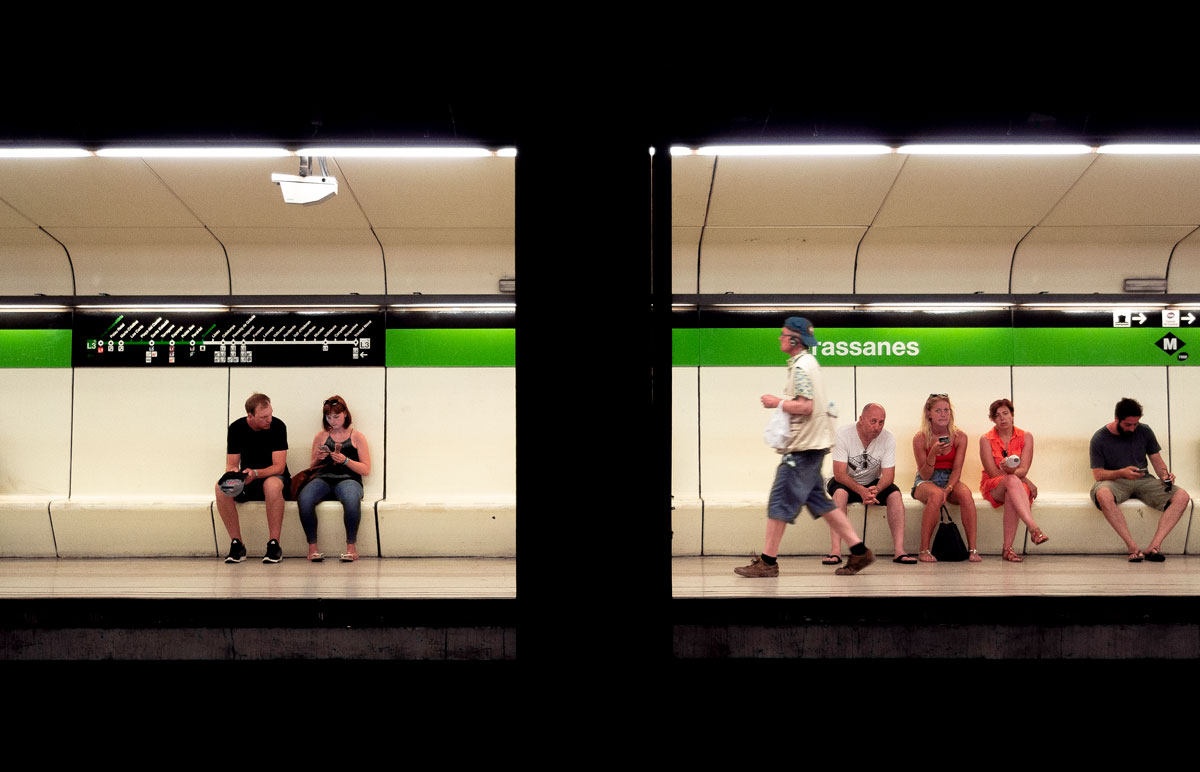Barcelona.
Part One. The City
Barcelona is not Spain. Barcelona is the capital of Catalonia, a region that noticeably differs from the rest of Spain in terms of culture, architecture, and spirit. Catalonia has long aspired to become a separate country, but Spain continually obstructs its efforts.
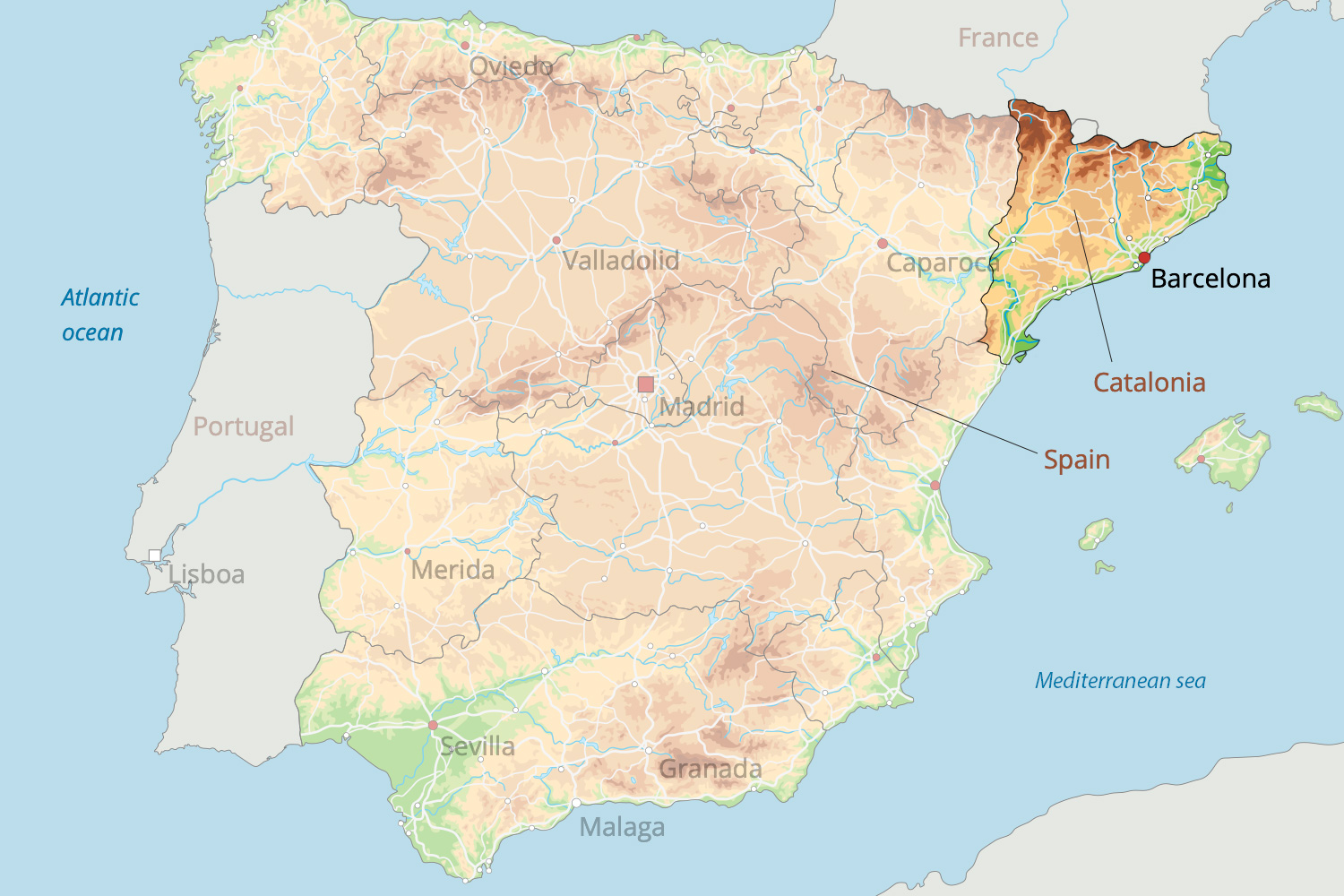
The reader has heard about the referendum that took place in Catalonia in the summer of 2017. According to its results, 90% of voters expressed their support for independence from Spain. In response to the referendum, the Spanish police used force against Catalans, leading to a powerful resistance in Catalonia, which brought hundreds of thousands of people to the streets.
In October, Catalonia unilaterally declared independence. Spain imposed direct rule over the region, arrested several members of the Catalan government, and even issued an international arrest warrant for the President of Catalonia, Carles Puigdemont, who promptly fled to Brussels.
All of this — the use of force, government arrests, and the president’s escape — greatly surprised the entire civilized world because 1) it occurred in the 21st century, and 2) it took place in Europe, not Africa.
However, the dispersal of the referendum in Russia was particularly welcomed, once again offering liberals the opportunity to “taste European values” and not failing to mention Crimea.
Of course, the comparison with Crimea turned out to be quite amusing.
Catalonia first attempted to separate from Spain in 1871. At that time, Europe still had royal customs, so the Catalans quickly faced backlash from the Spaniards and agreed to enter into negotiations.
Then, in the years leading up to World War I, the Catalans began to establish an autonomous region in order to make another attempt at separation in the 1930s. This time, their efforts were disrupted by the Spanish Civil War and the new government led by the notorious fascist Francisco Franco.
The third attempt had to wait for a long time until the entire phalanx, led by the local Duce, passed away. Finally, in 1975, Franco kicked the bucket, and in his place came a king with a resounding Spanish name — Juan Carlos, who quickly dismantled the fascist regime and adopted a modern constitution.
The hitch lies precisely in that constitution, which prevents Catalonia from simply telling Madrid to go to hell. Specifically, according to some article, only the Spanish government itself can organize a referendum and only on a nationwide scale. In other words, Catalonia can only secede from Spain if the entirety of Spain supports it.
That’s a very amusing article. It’s interesting, why would the rest of Spain suddenly vote for the separation of a part from itself?
The contractual relationship between a state and its people is always abstract and tied to a historical era. For instance, the Catalans voted for the constitution in 1978. However, that was 40 years ago, and it was not the same Catalans who are living today who voted for it! Generations have changed, as well as the government of Spain. It’s a paradox of the legal system: sons and grandsons are obligated to adhere to agreements made by their fathers and grandfathers.

Since the beginning of 2010, the movement for Catalonia’s independence has been gaining momentum. Intermediate referendums, surveys, and rallies were held almost every year, culminating in the referendum of 2017 and the harsh reaction from the Spaniards to it.
However it may be, it seems like this is indeed the endgame. The government of Spain will soon change, the fugitive Catalan president will return to Barcelona, and Catalonia will likely achieve its long-awaited independence, rightfully so... Unlike Crimea, which instead of centuries-long struggle and the powerful consolidation of all societal forces simply flew out of one country and landed in another within two damn weeks.
¡Viva Cataluña!
⁂
In Catalonia, there is no trace left of the compact and detail-rich Spanish cities. Barcelona is a wide, spacious metropolis. Many have seen its photographs from above. The city is planned and assembled with squares of houses like Lego blocks.
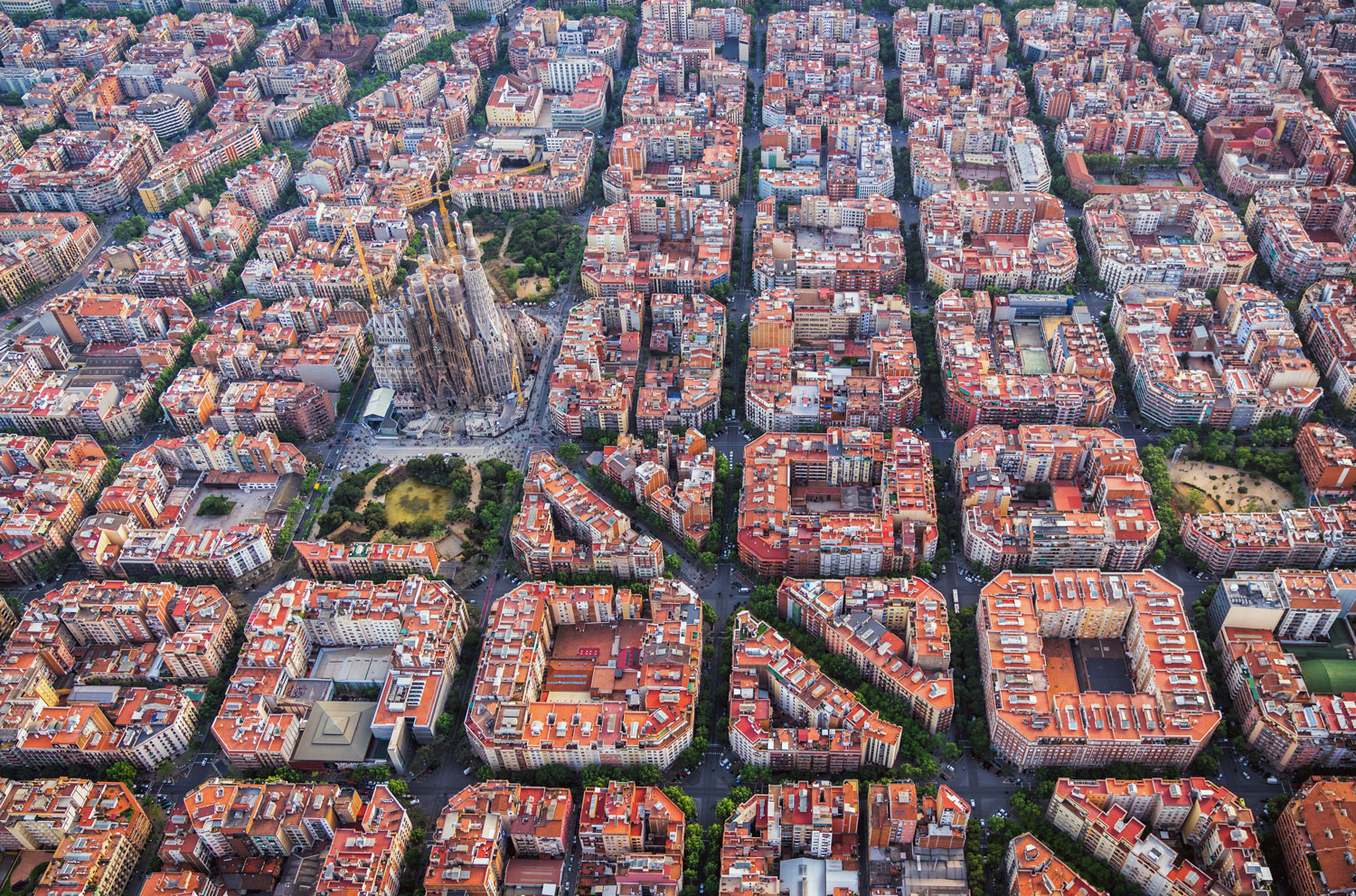
It’s amusing that from the inside, this planning is not visible at all — houses simply line along the streets like in any other city.
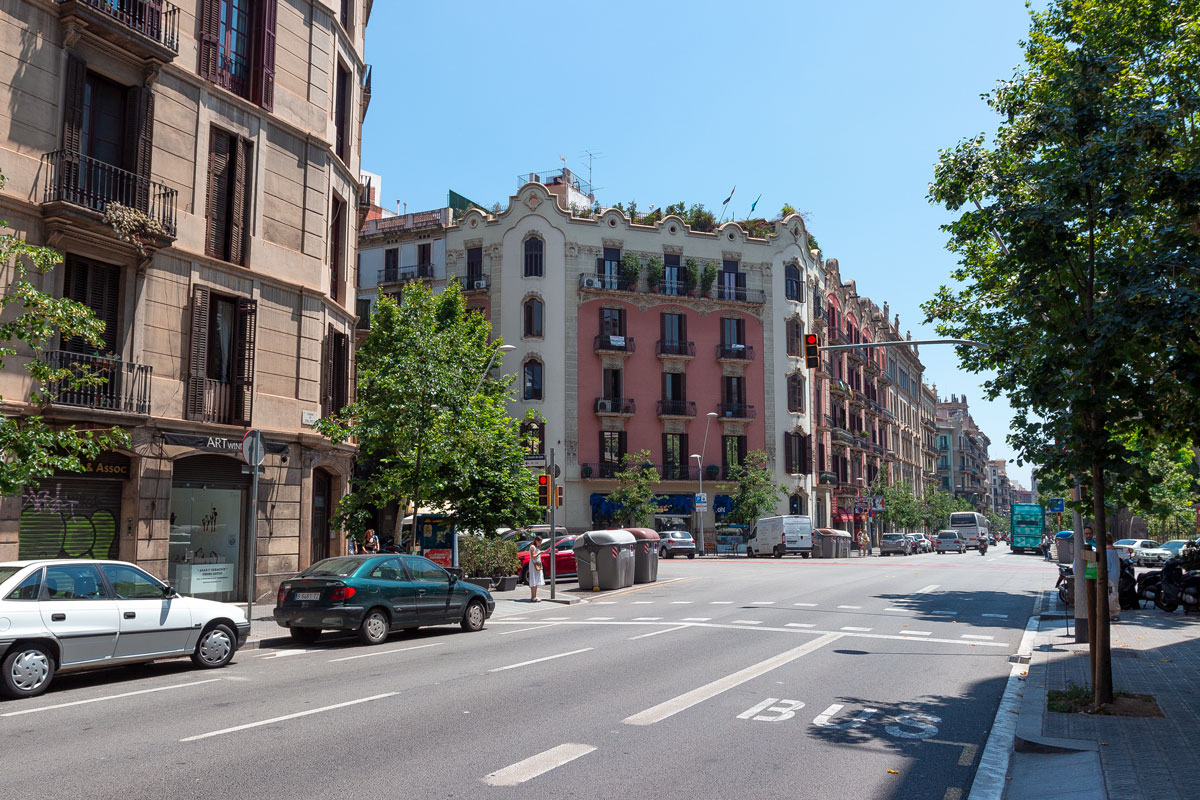
What’s inside doesn’t matter. Even if you climb up the Sagrada Familia — the highest point in the center — you still can’t see the layout. That’s why its elegant pattern doesn’t contribute to the cityscape and doesn’t add beauty to the city.
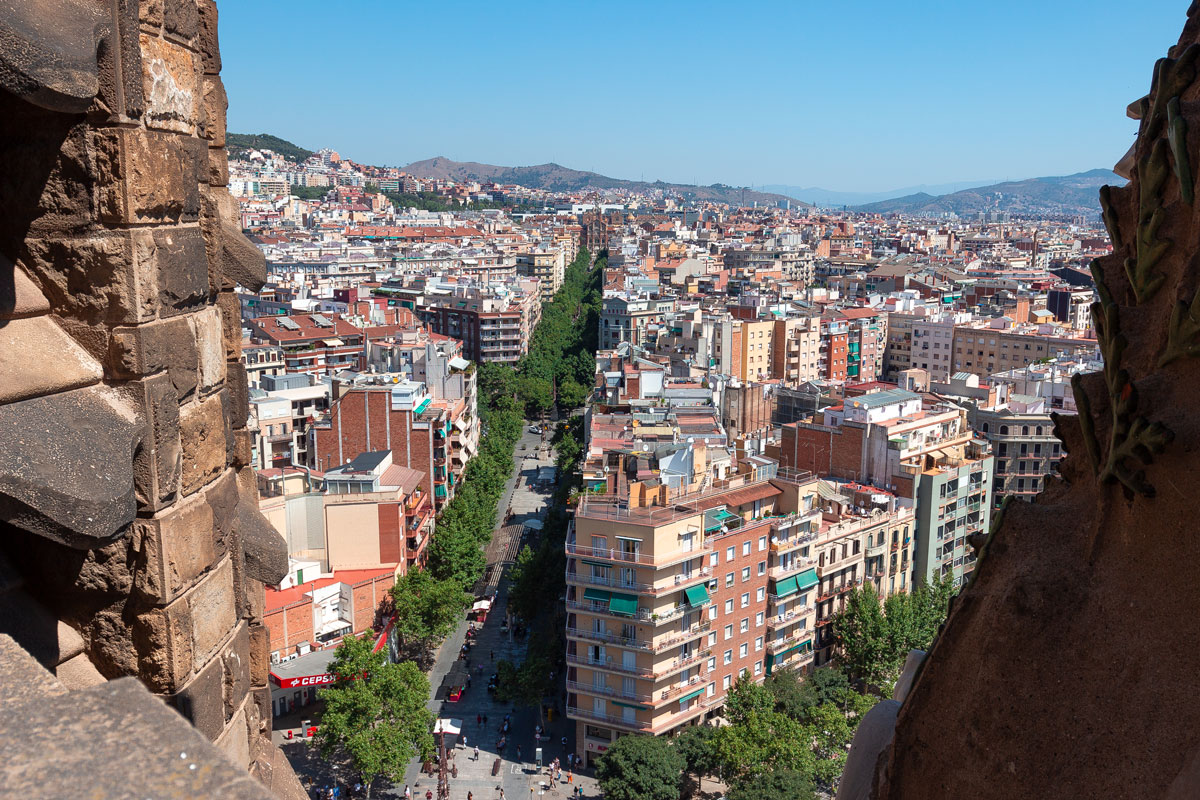
The streets of Barcelona are excessively wide.
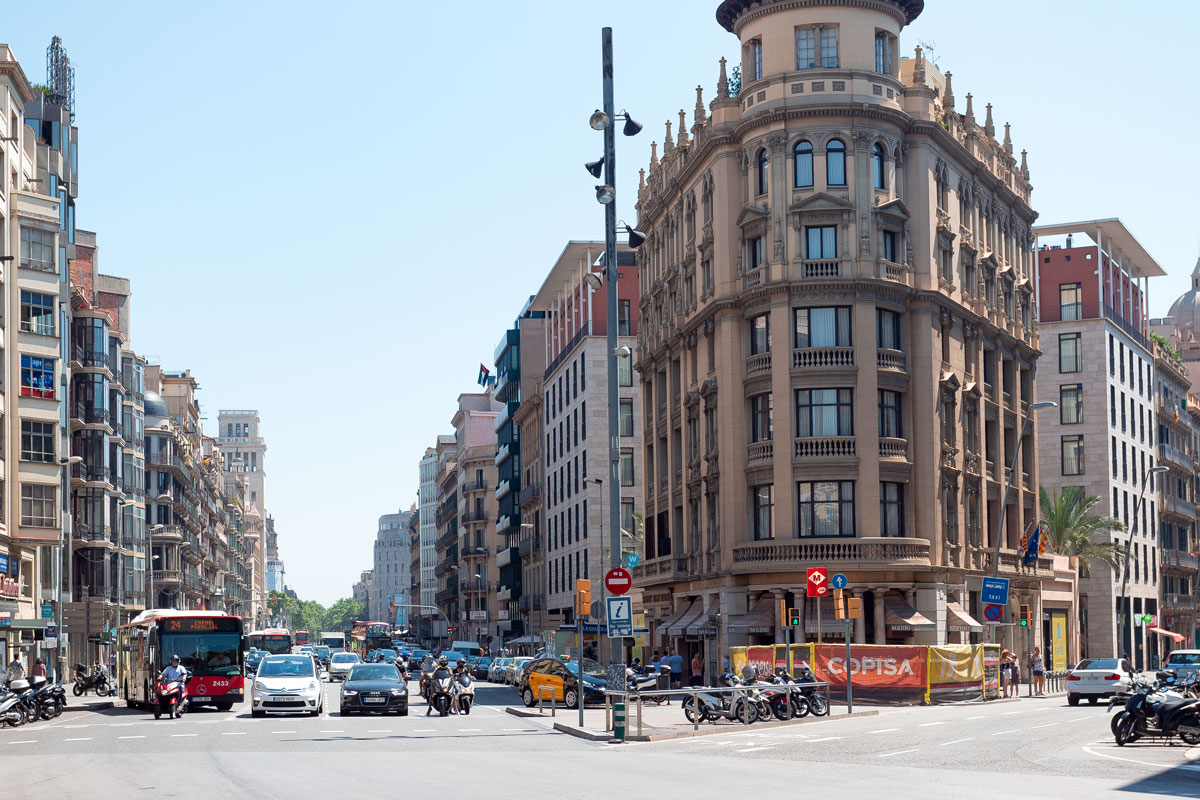
The sidewalks are so wide that a tanker could pass through.
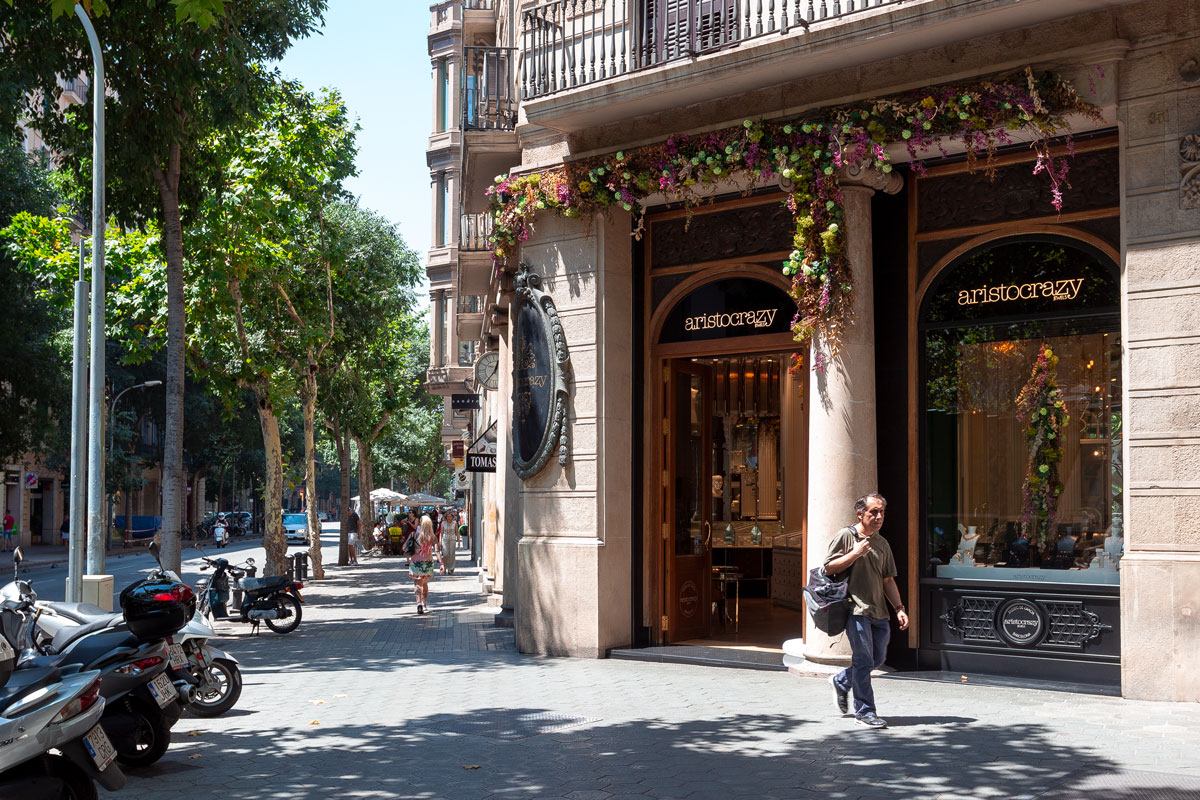
Because of such spaciousness, Barcelona in many ways resembles Moscow. It’s rare to find such wide avenues in such large numbers anywhere else in Europe.
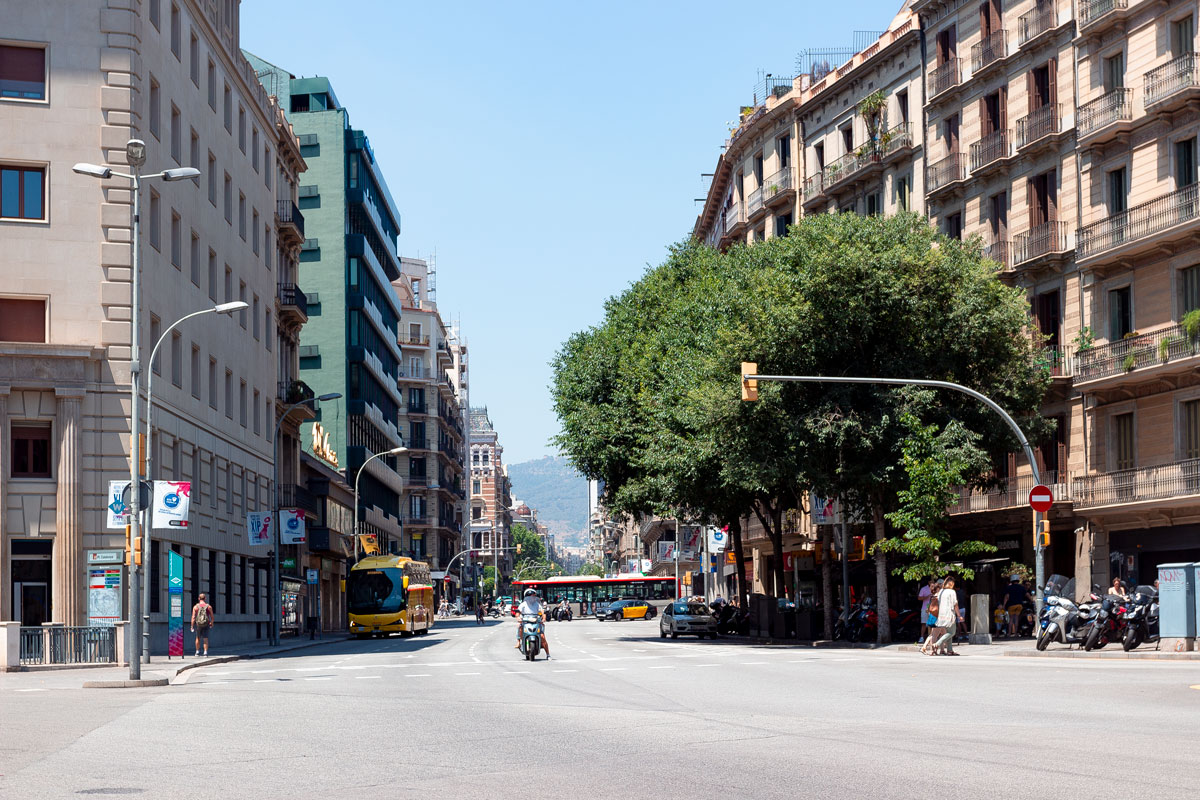
One concise word aptly describes Barcelona as a whole: this city is monstrous in every sense.
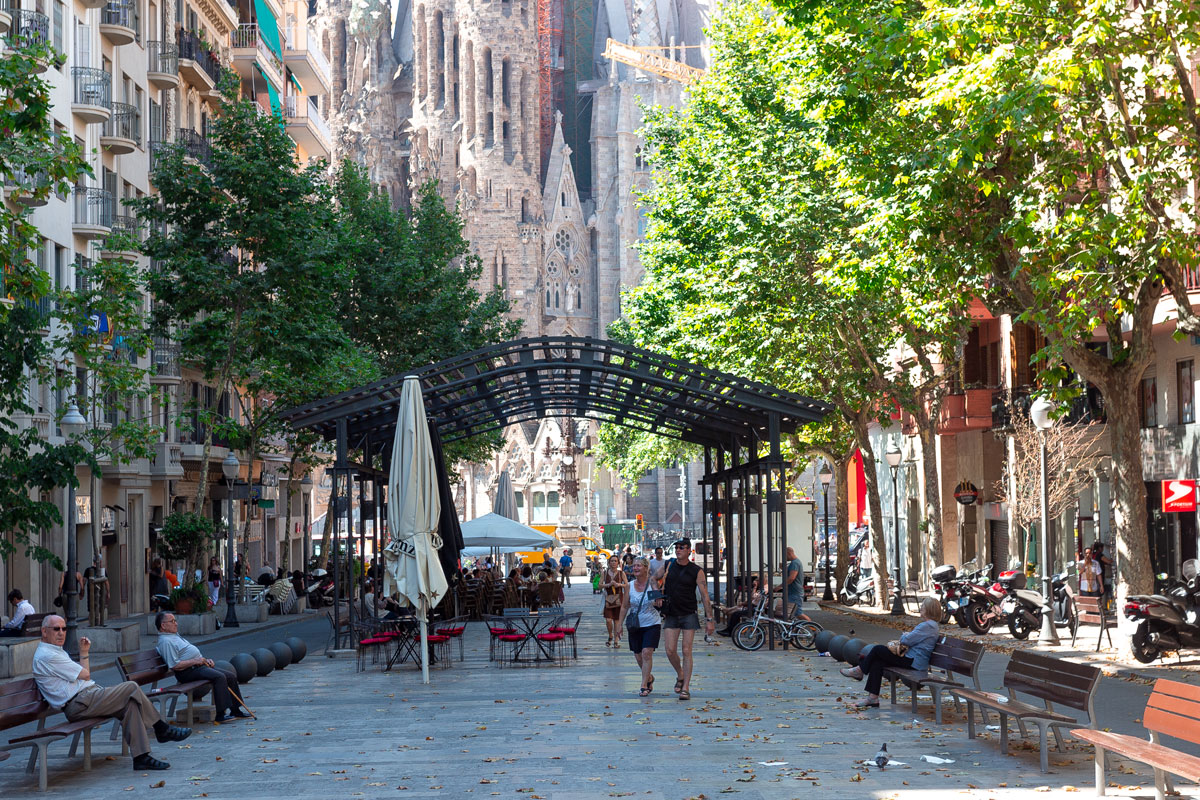
In Barcelona, every detail is majestic, starting from the excessively tall and peculiar, one might even say monstrous, Sagrada Familia temple.
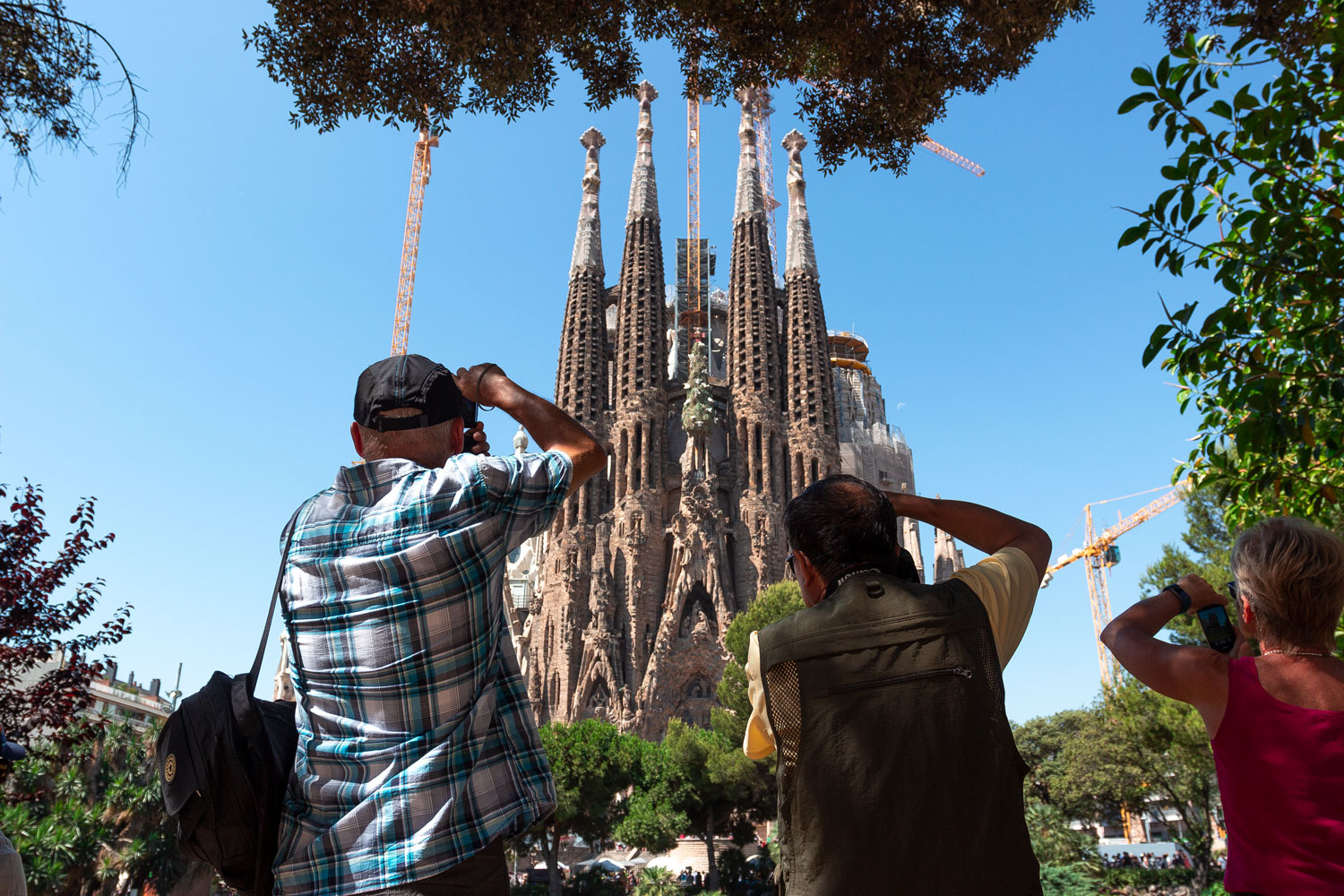
The Sagrada Familia is the most popular attraction in Europe after the Eiffel Tower. In Barcelona, 90% of tourists come for the same reason as those who visit Paris — to take selfies against the backdrop of this enormous structure.
The history of the Sagrada Familia is unknown to only... it’s hard to even imagine who. The story is well-known: how this temple was started by the Great Architect Gaudí in 1882 and was intended to be built solely from donations from parishioners.
In other words, no income from candle factory stocks, no revenue from mystical services — only donations towards the construction budget are allowed. Judging by the fact that the cathedral is still unfinished after 136 years, it seems that the testament is indeed being followed.
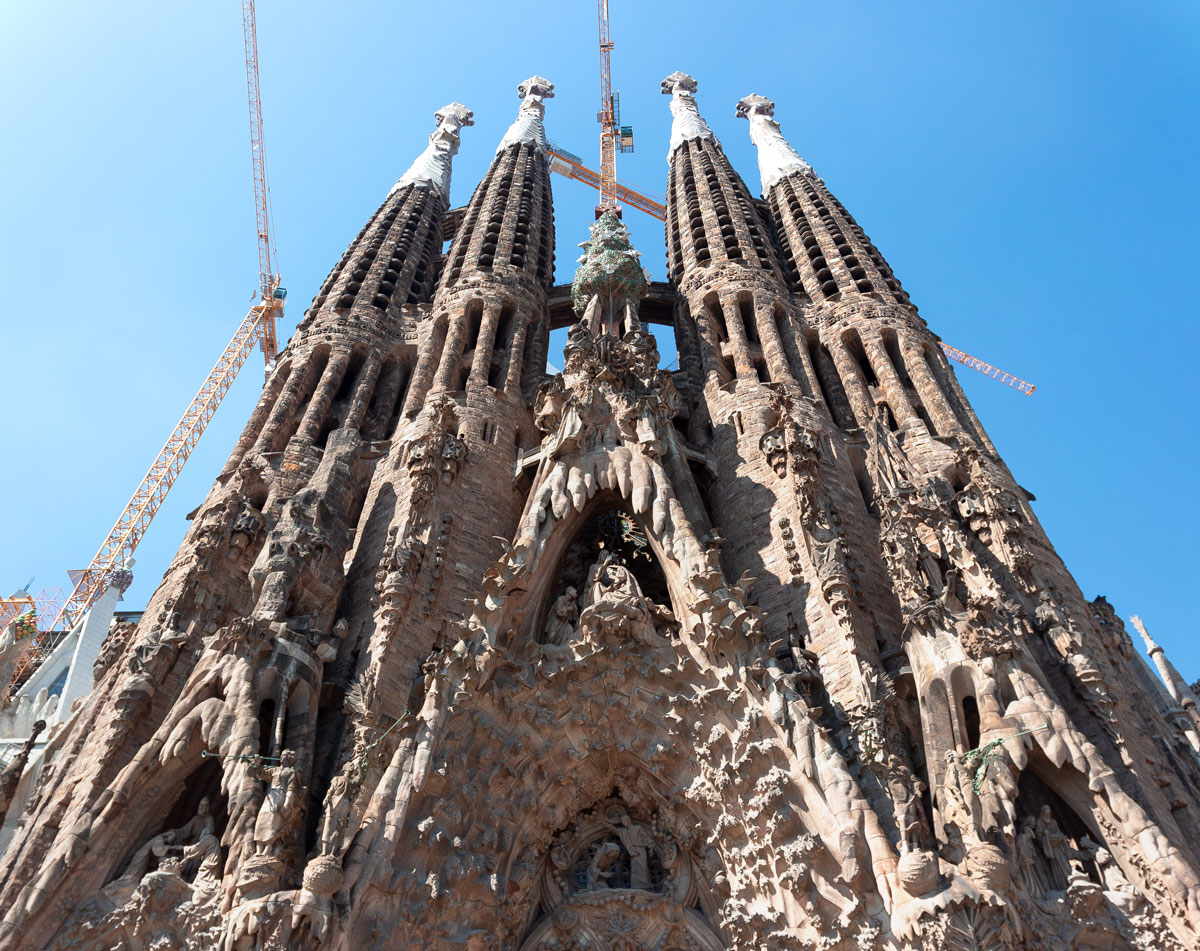
I’m not sure if I have the right to evaluate such historical structures, but from the street, the Sagrada Familia resembles a plastic attraction in an amusement park.
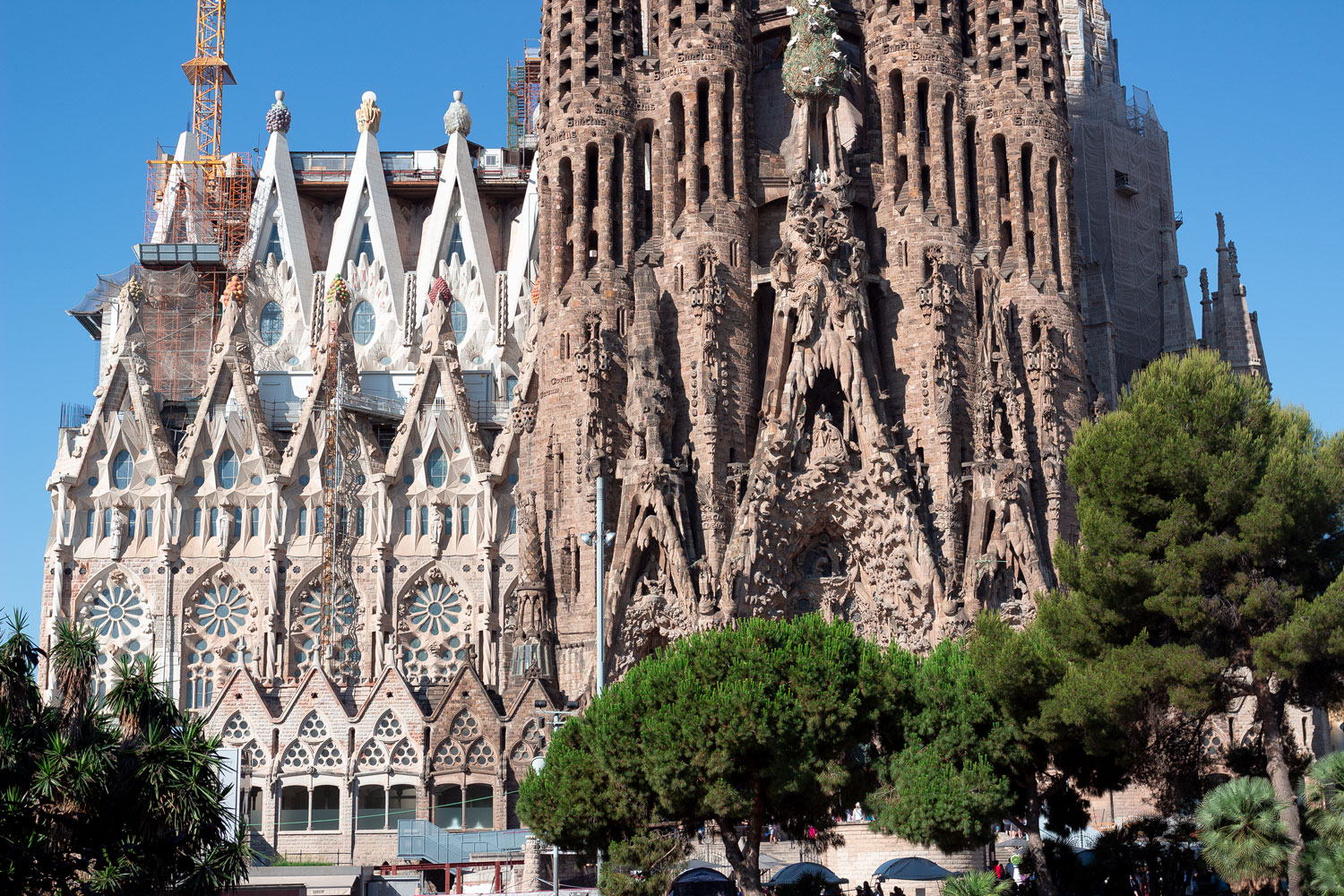
Inside, the temple is much more beautiful, but its halls are so enormous that there is no sense of coziness in the temple. However, the light from the stained glass windows casts such a mesmerizing play on the interior that the film in a digital camera instantly runs out.

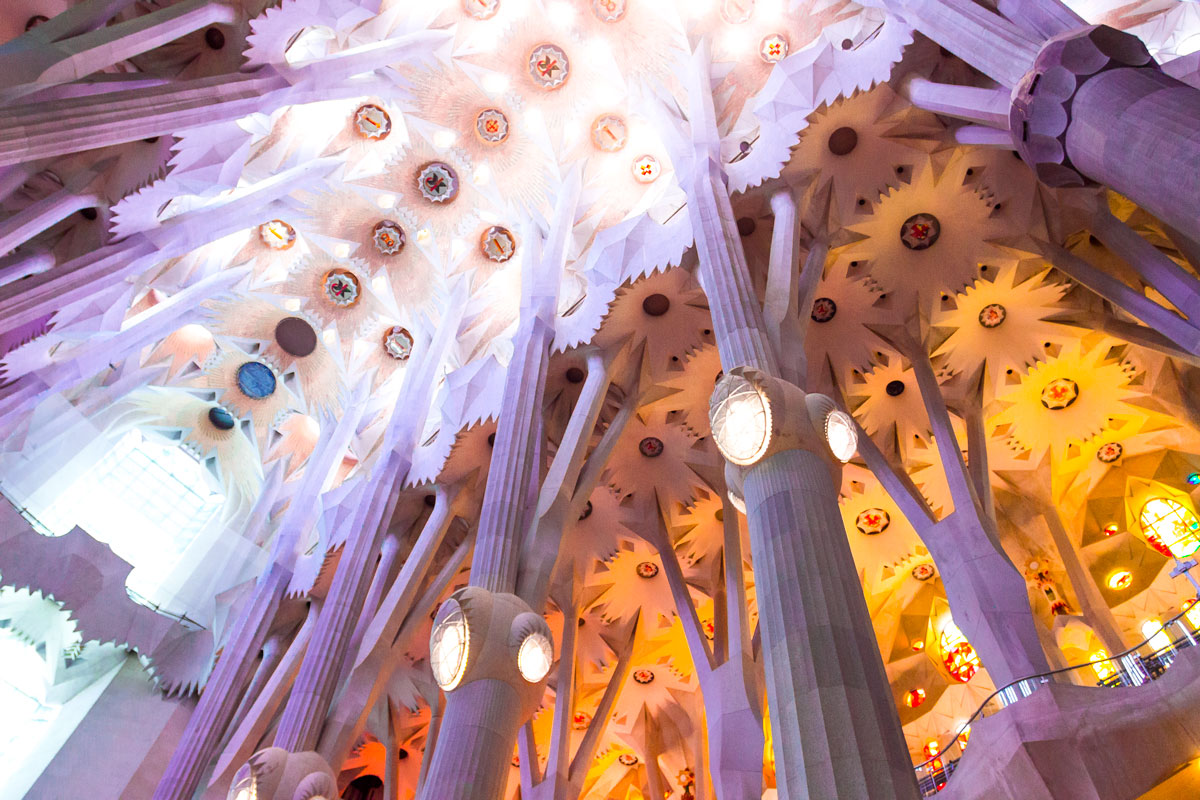

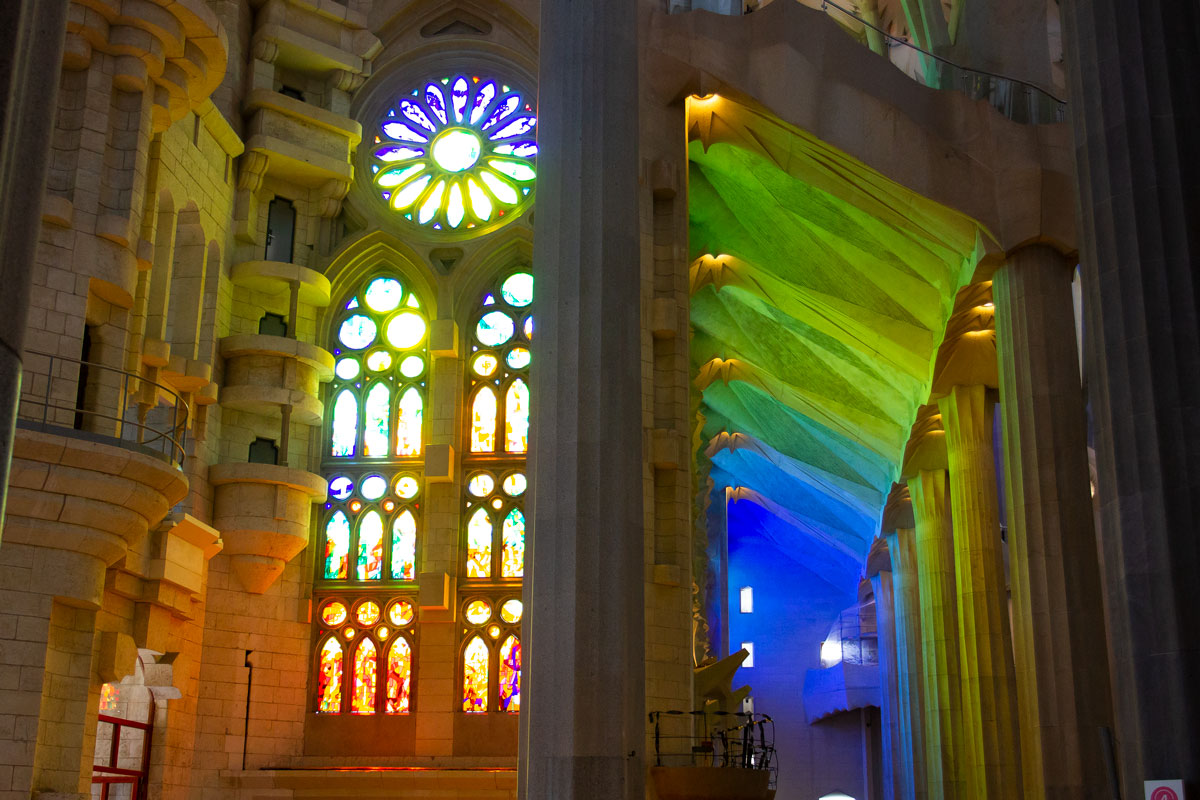

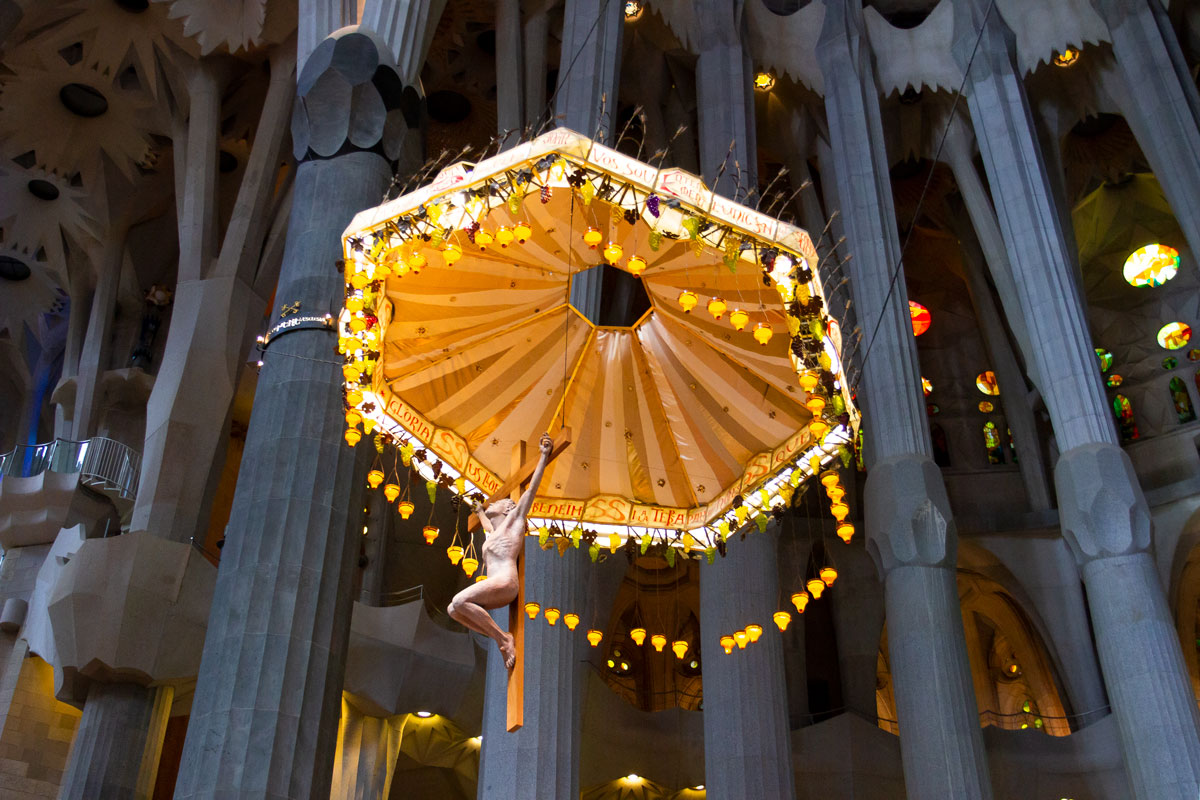
The gigantic temple embodies the essence of Barcelona. Only in a monumentally grand city could such architecture be born. The reverse is also true: if such a colossal structure stands somewhere, the entire city will be immense.

The main street of Barcelona, La Rambla, is a hybrid of Tverskaya Boulevard and Arbat: a wide street adorned with trees.
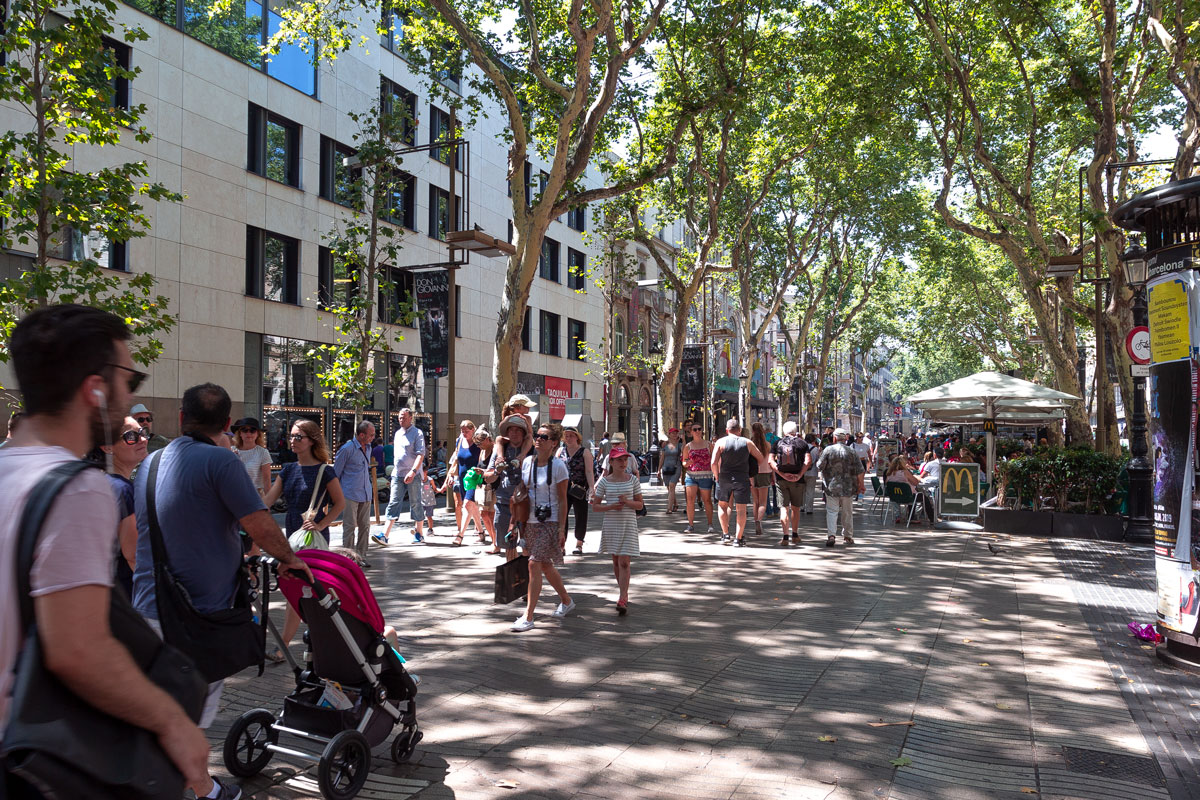
Rule: if a city has a wide “main” street, narrow alleys must invariably branch off from it.
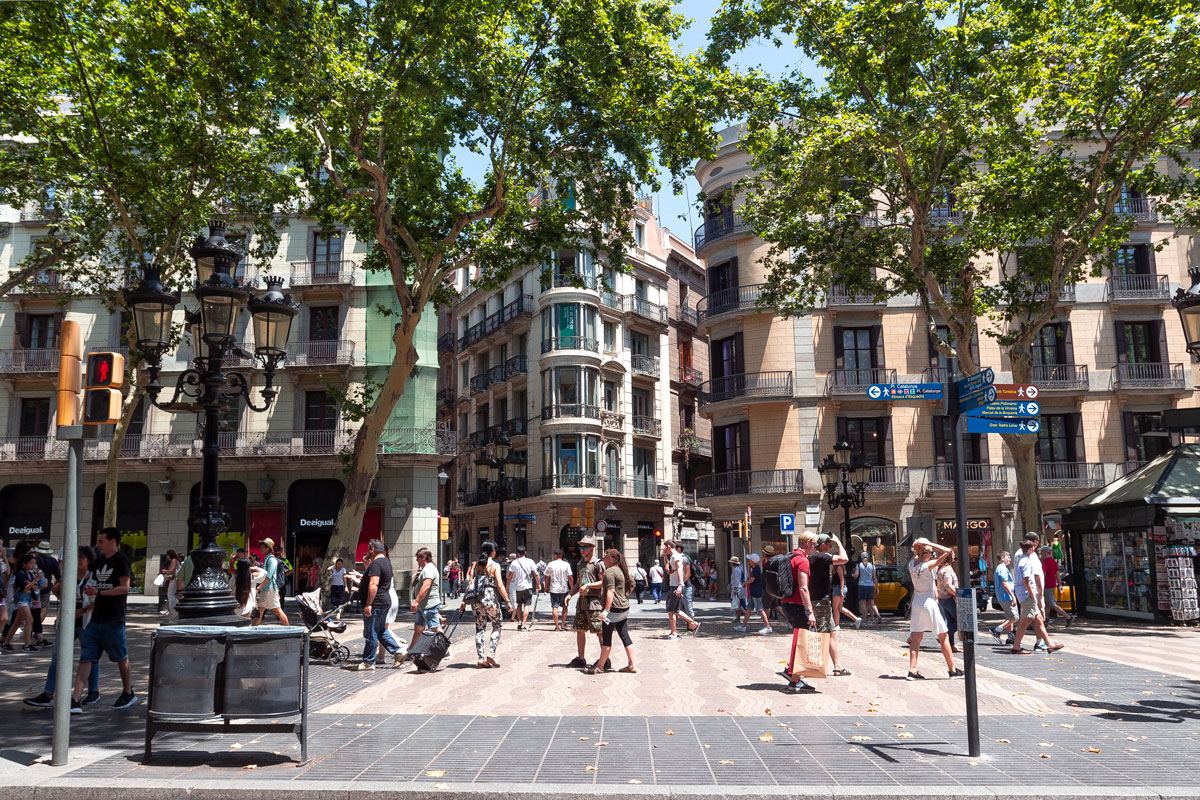
Barcelona is no exception, and the streets branching off to the left and right from La Rambla are the only slightly narrower streets in the city.
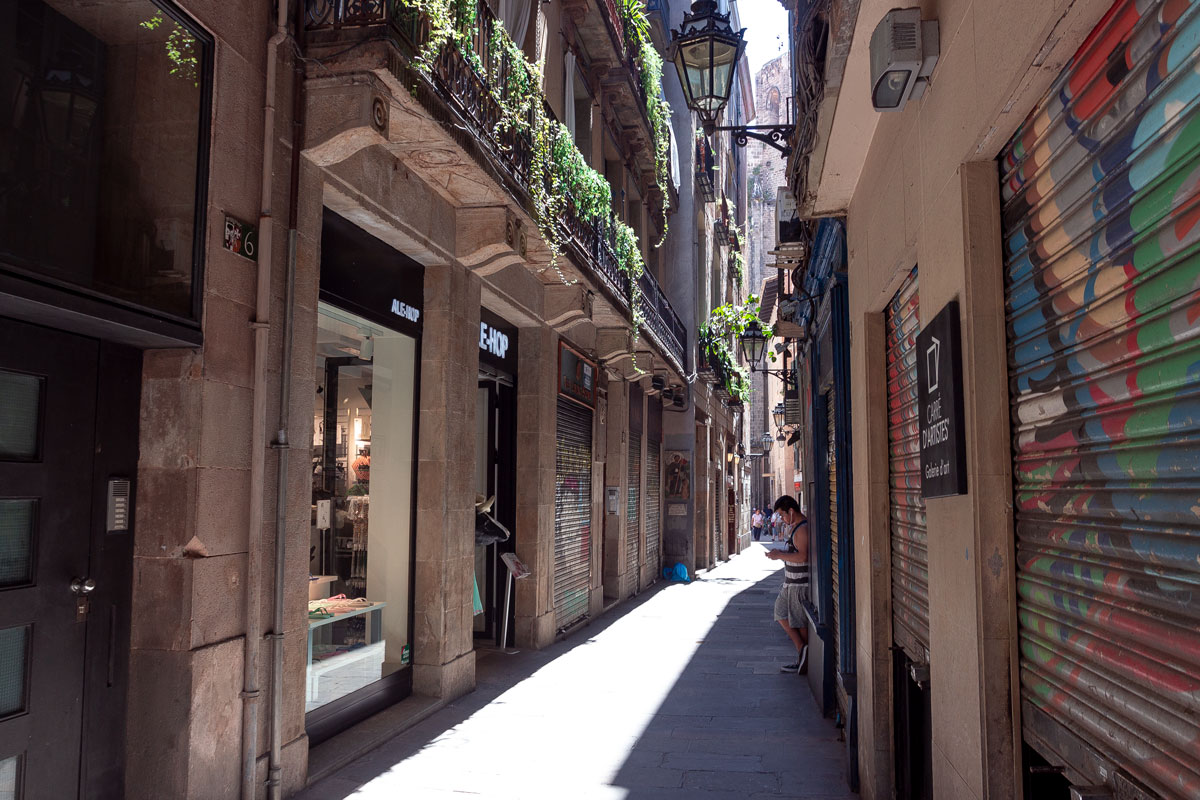
It is highly unlikely that Madrid already has the widest avenue.

Small squares are almost always arranged at inner intersections, accommodating several cafes with tables and fountains.
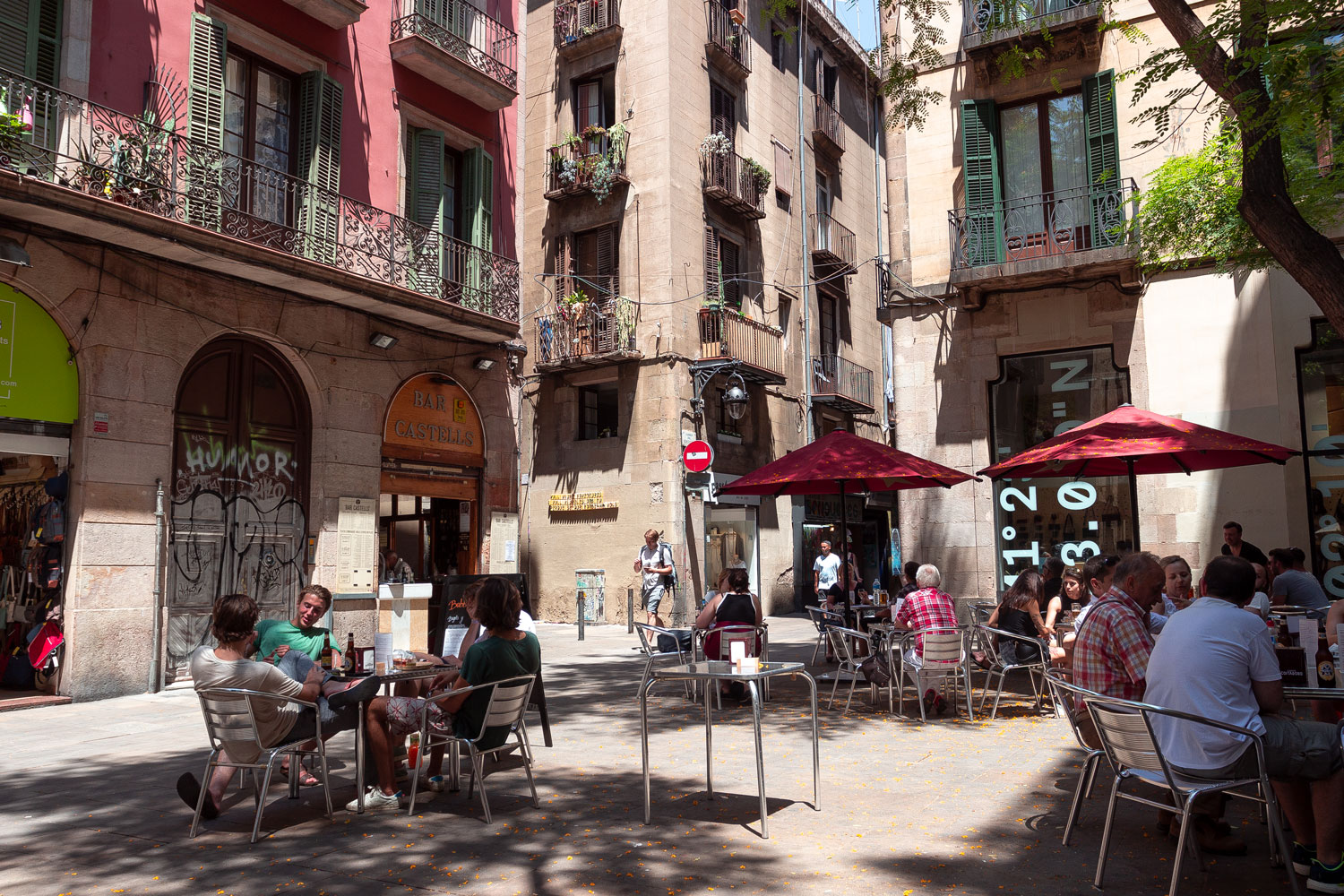
No, Barcelona maintains its gigantic scale even in the most secluded corners. Fortunately, pleasant details gradually begin to appear somewhere within these alleys.
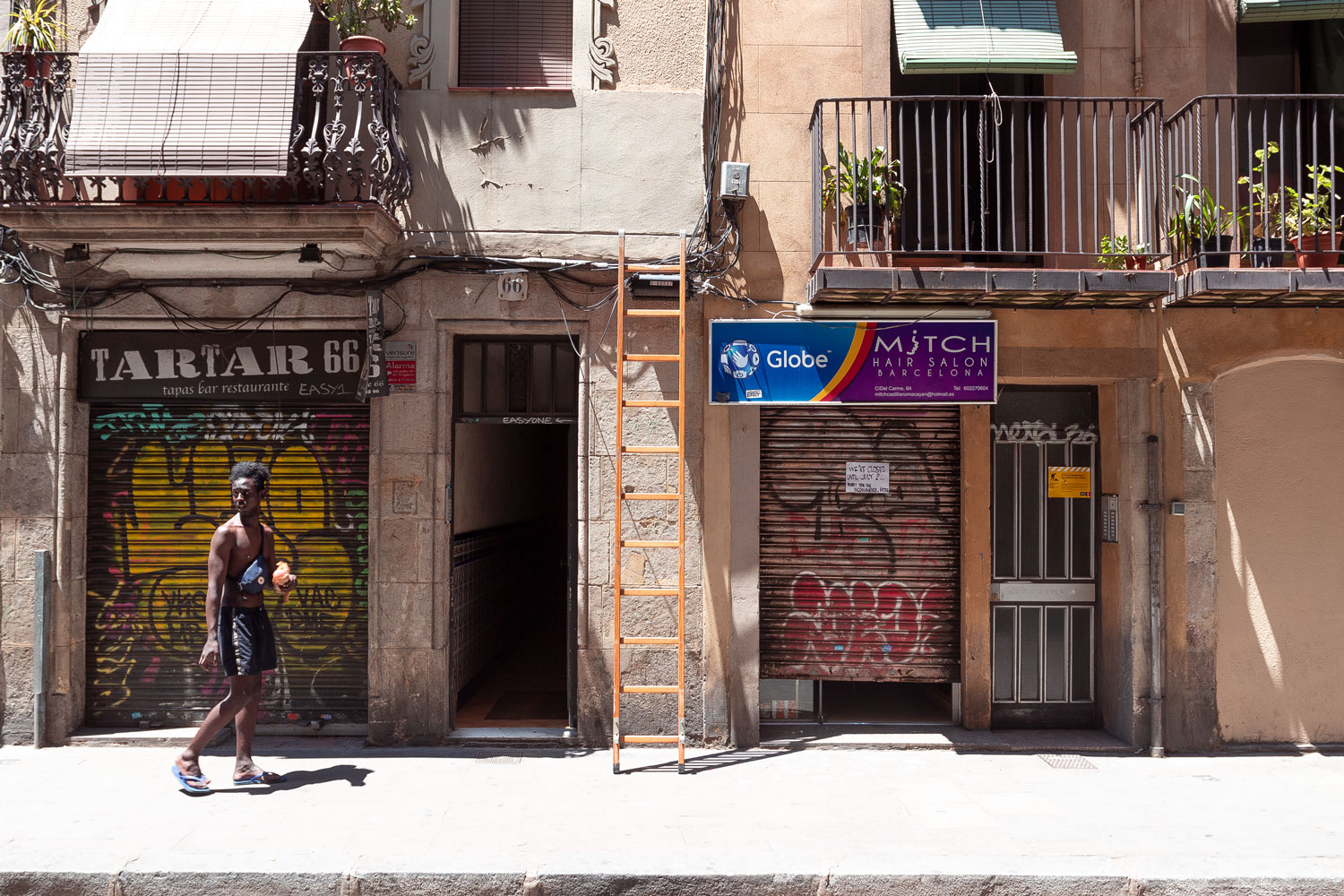
Homes of bright colors with balconies and shutters — greetings from Madrid. If there is any flag hanging on the balconies, it’s usually the Catalan flag. The Spanish flag is not displayed anywhere in Barcelona.

Barcelona’s small details are far from trivial. Signboards are stern marble slabs adorned with extravagant ornamentation.

The window frames of residential buildings either seem to be taken from a royal palace or copied from Gaudí’s designs.

Rows of facades, each more unconventional than the other, curve and converge towards a medieval tower. No, despite its efforts, Barcelona cannot manage to be just a Spanish city. Even the smallest details here are too grandiose.
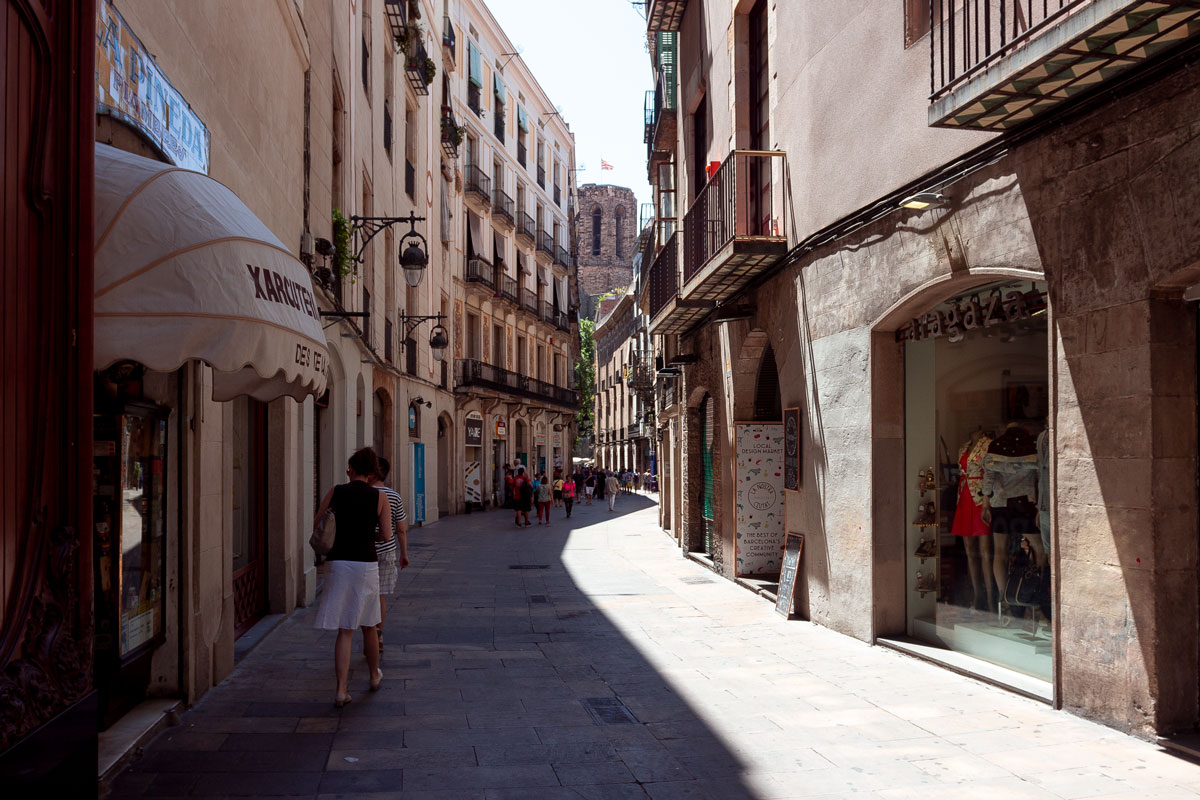
However, a carelessly abandoned ball in one of the squares of the Gothic Quarter, a bold lantern, and palm groves unexpectedly create a composition that few tourists visiting here are likely to notice.

There are an incredible number of tourists here, making it difficult to simply stroll along the streets — Barcelona is always in rush hour mode, with crowds of people at all times, day and night.
At the southern end of La Rambla, leading to the sea, a Catalan person in a pink dress and bunny ears danced to the music. A crowd gathered around, filming him on their phones, singing along, and joining in the dance. Well, just a harmless European form of self-expression.
Passing by were Russian tourists — a husband and wife, apparently experiencing being abroad for the first time. With curiosity but with contempt, they looked at the performer. The wife commented: “Well, what is this? What is it for? What amusement is there in this? What intelligence is there in it? Here, on Arbat Street, we have drawing, dance, literature...”
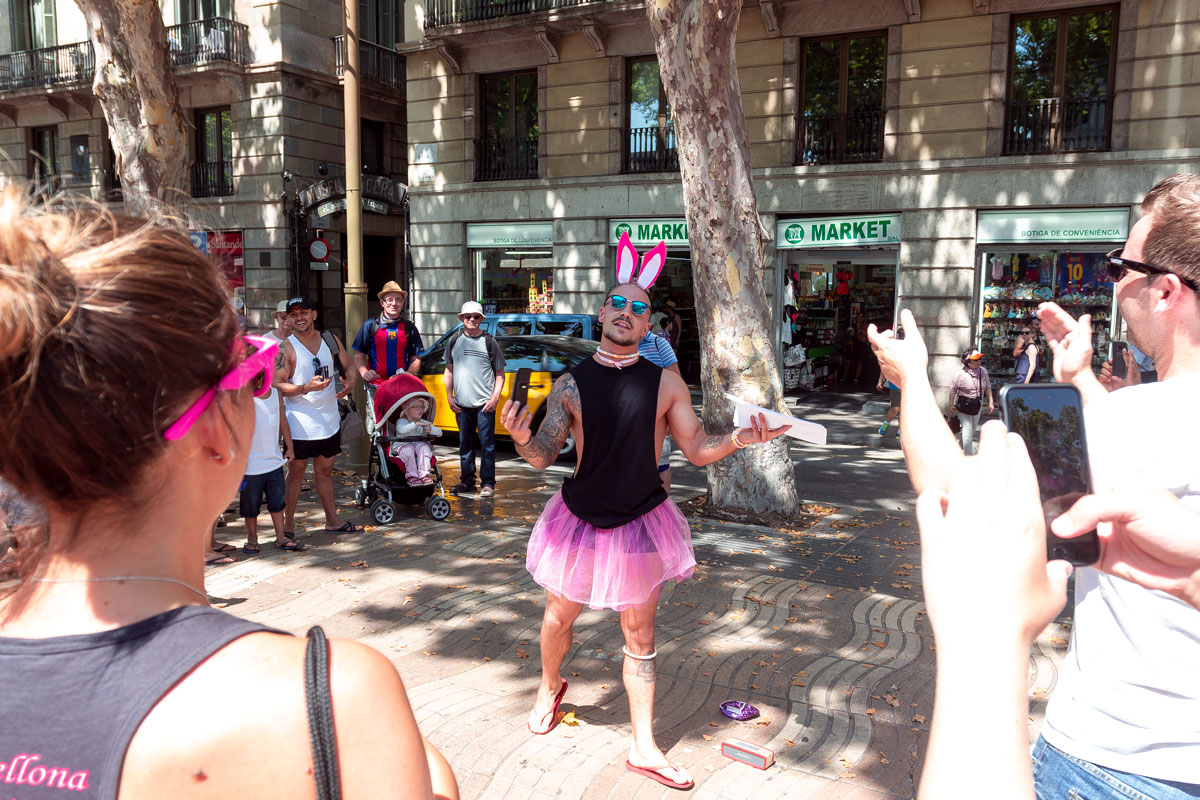
A hundred meters away from the solitary gay picket, kilometer-long rows of street artists and book stalls began.
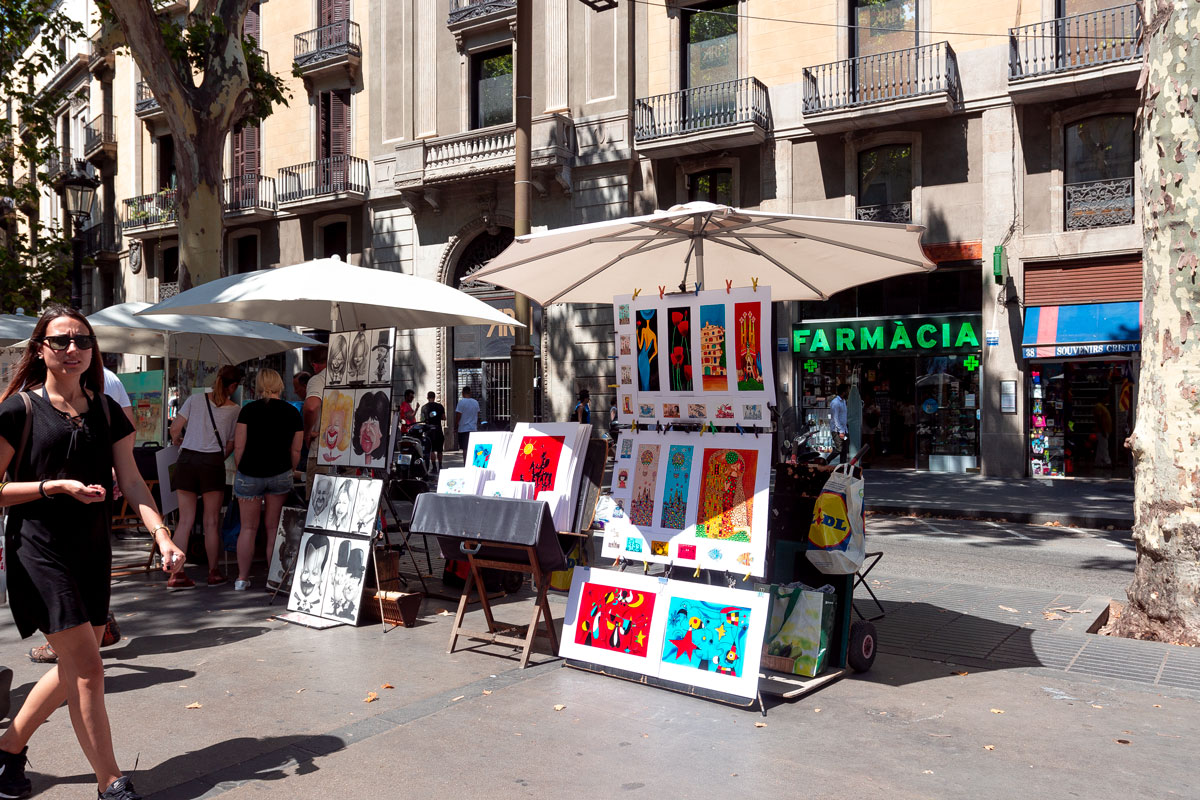
A fair was set up on one of the squares, with tables piled high with wine, olive oil, fifty varieties of cheeses prohibited in Russia, and jars of honey that extended beyond the horizon, their colors copied by the designer from Photoshop’s pastel palette.
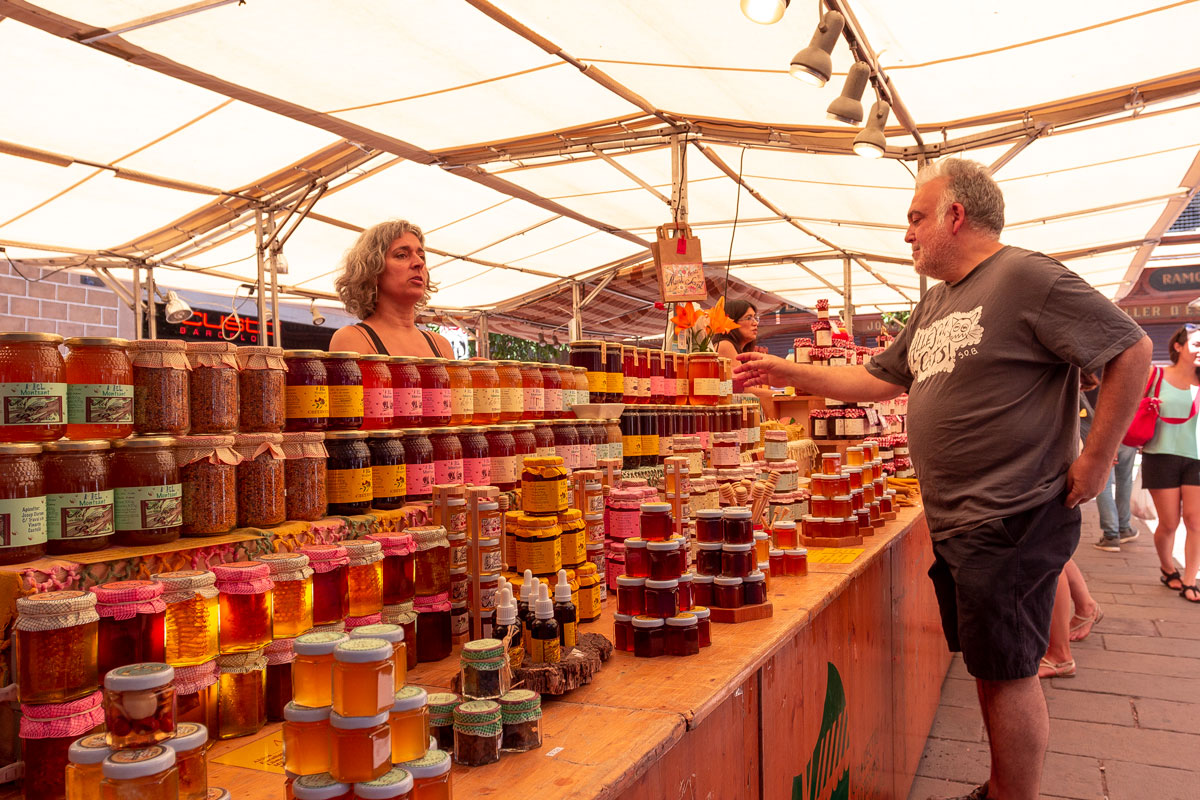
Rows of vendors selling old knick-knacks lined up near the beach. At the market, one could find artifacts from the 19th and 20th centuries: black and white photographs, typewriters, vintage cameras and wallets, badges with the Hitler’s swastika and the Soviet hammer and sickle, roller skates from the 1930s, and an authentic Braun hairdryer.
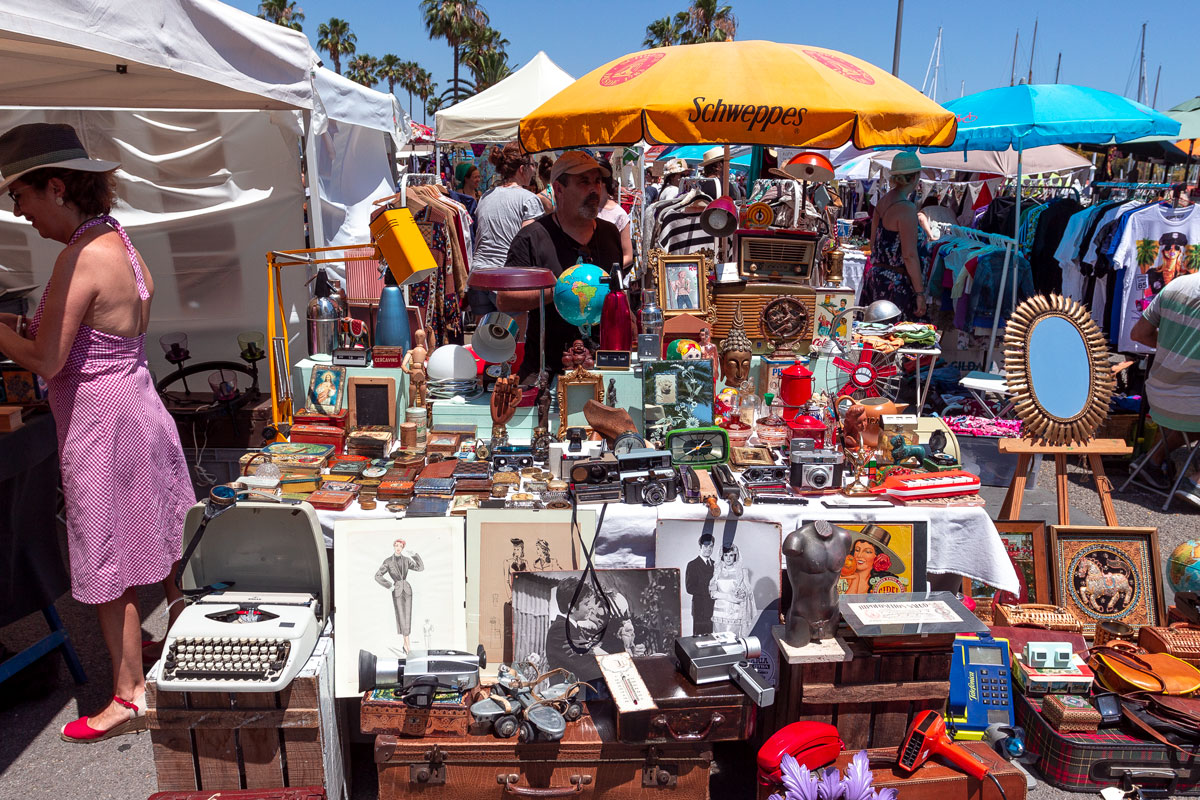
It pleased me knowing that the skeptical Russian couple still had to go through all of that. Meanwhile, I was heading in the opposite direction and was already exiting La Rambla.
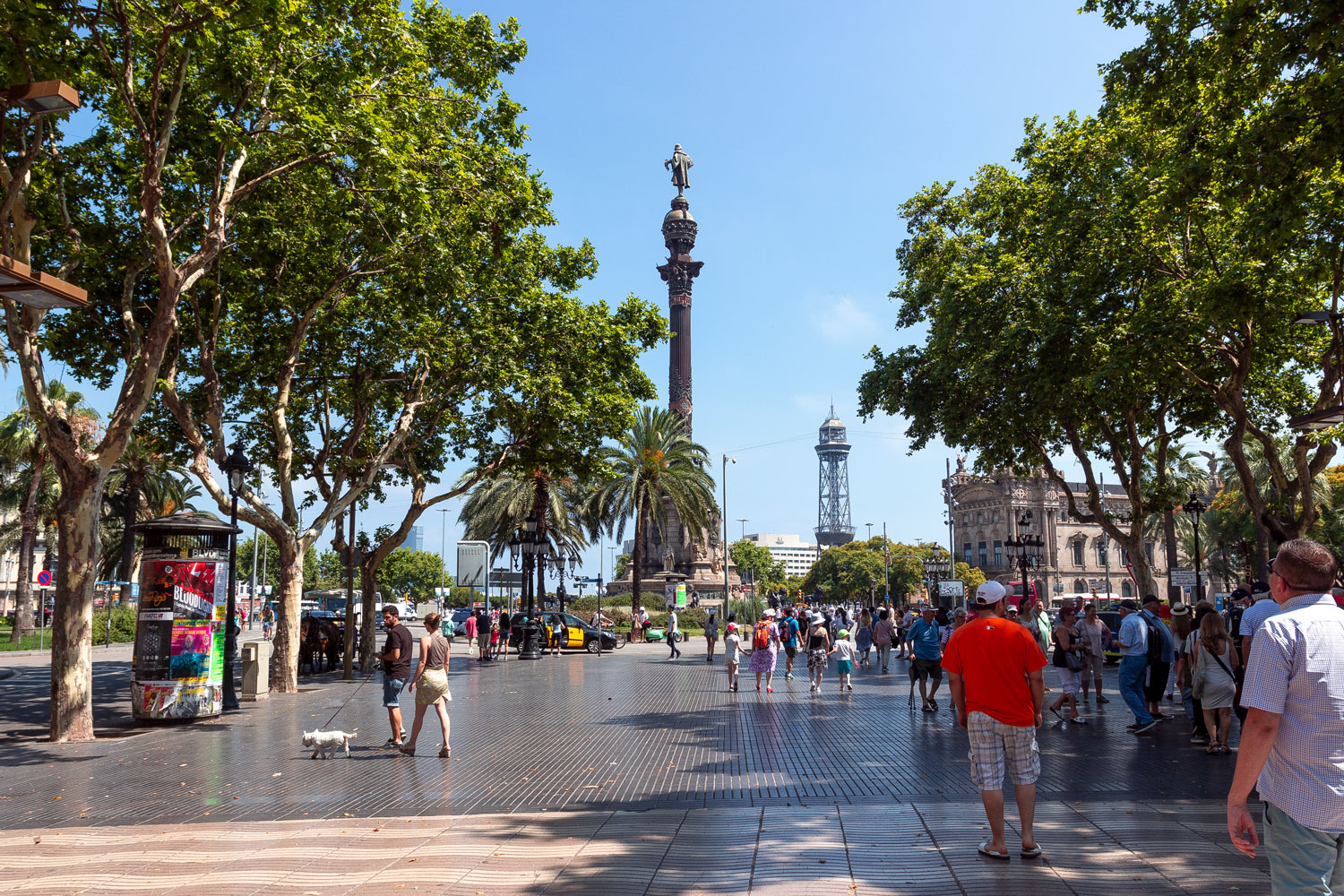
And when I reached the end of the street — wow. It turned out that this city also had a huge beach and the Mediterranean Sea. Who would have thought?
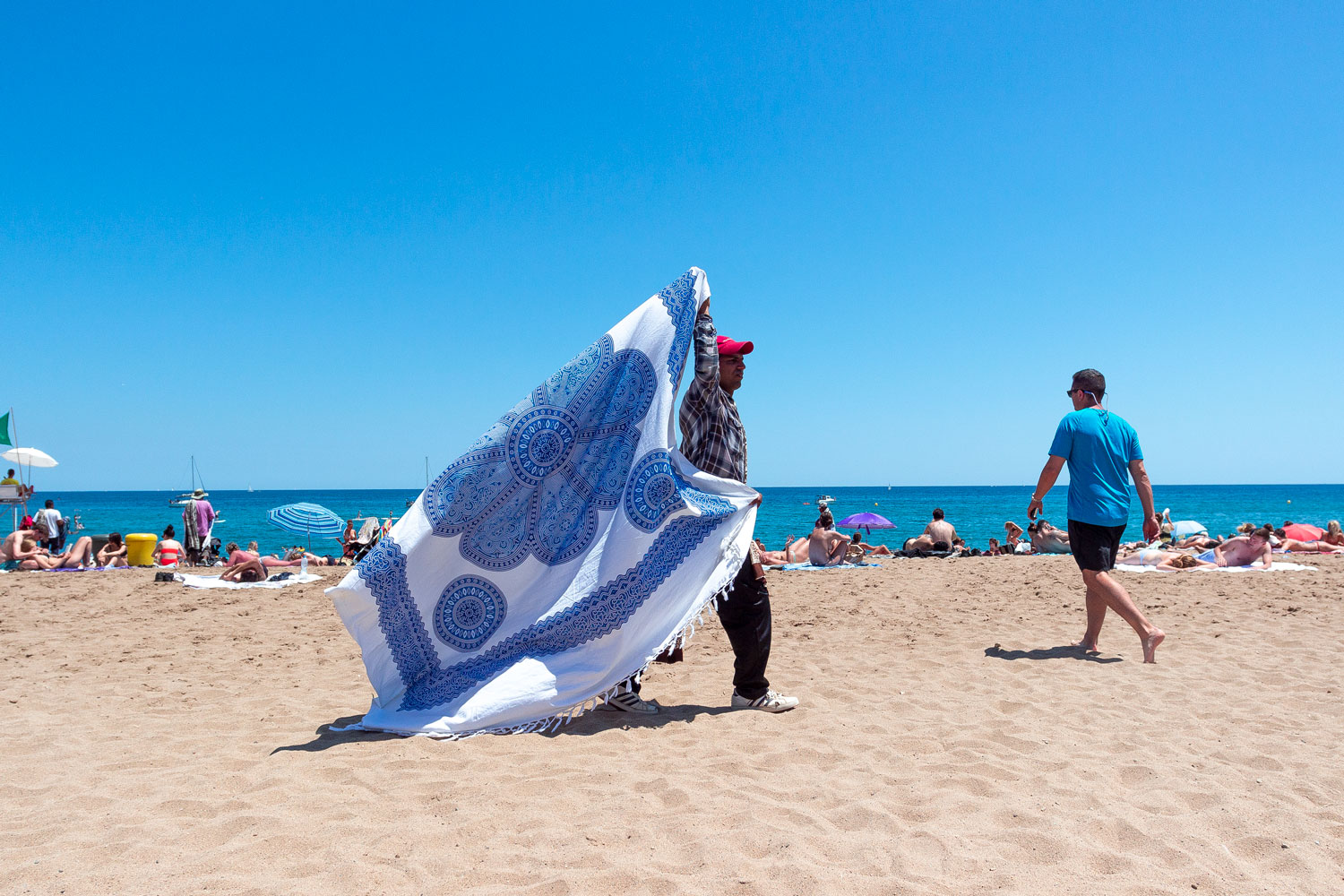
It turned out that there was a dock and yachts here.

It turned out that there was a cable car running across the entire beach, above the yachts and squares.
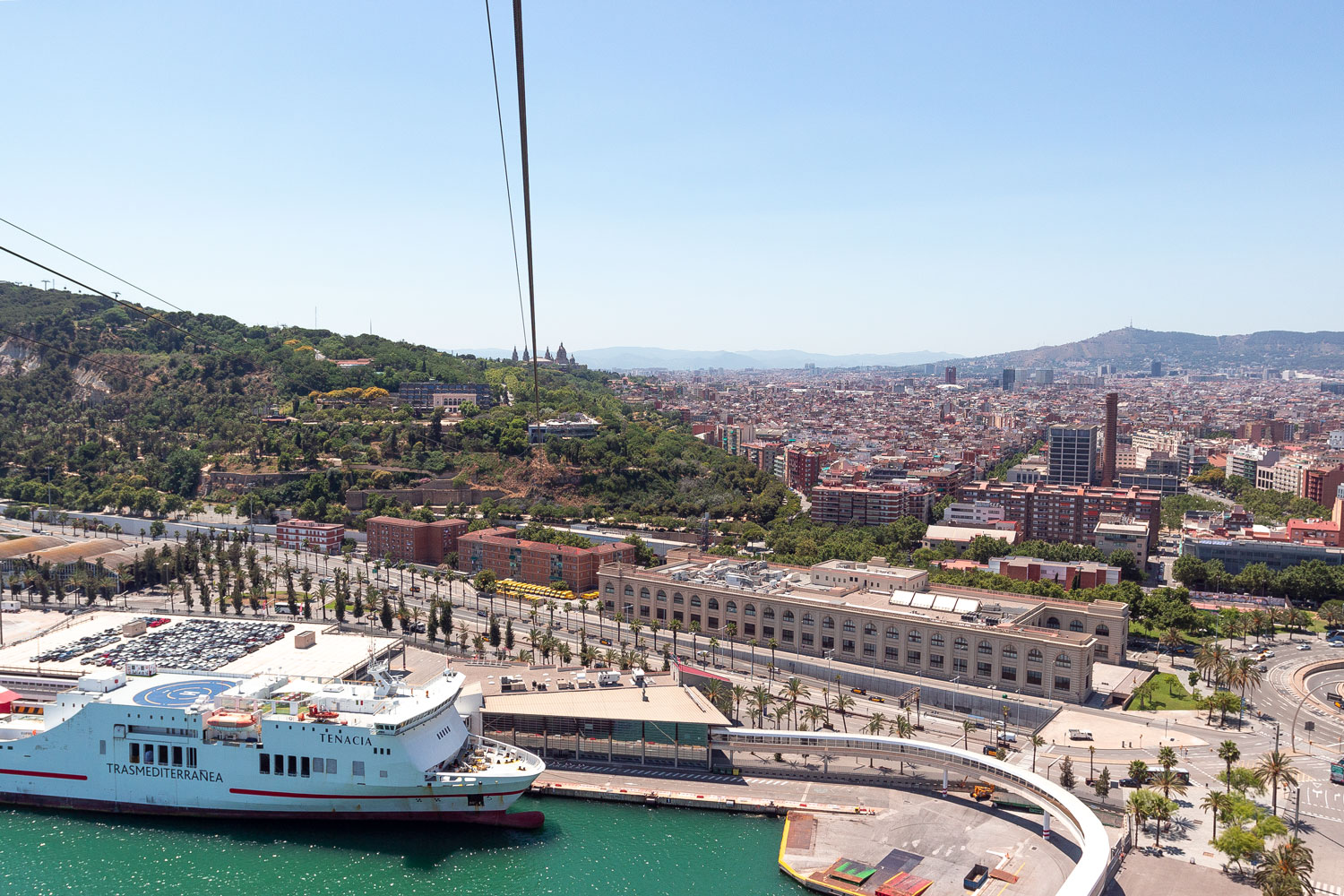
It turned out that the cable car leads to the mountains, and in general, around Barcelona, there are many mountains and small hills.
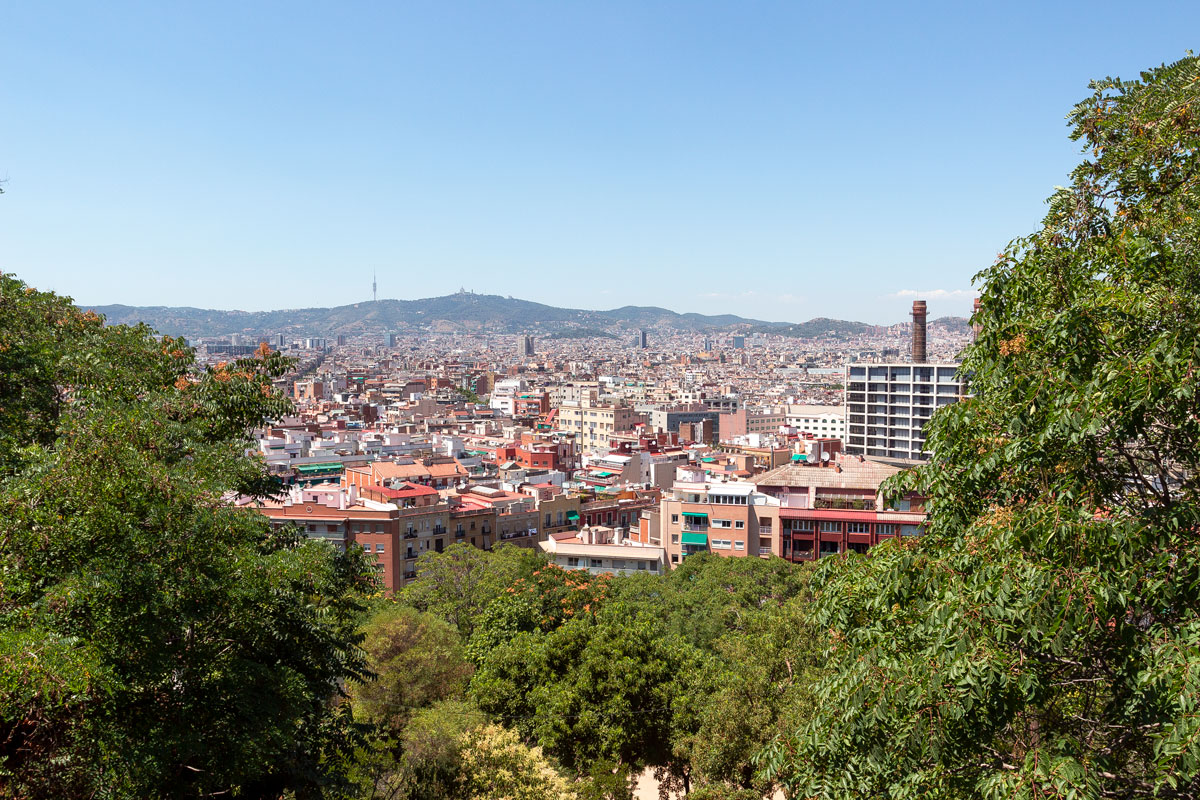
And here I have already walked so much, written so much, yet understood nothing properly. That’s why I returned from the beach via the cable car, descended from the mountains, took the subway, and went back: back to where I started. To start all over again, to talk about the cathedral and Gaudí.
